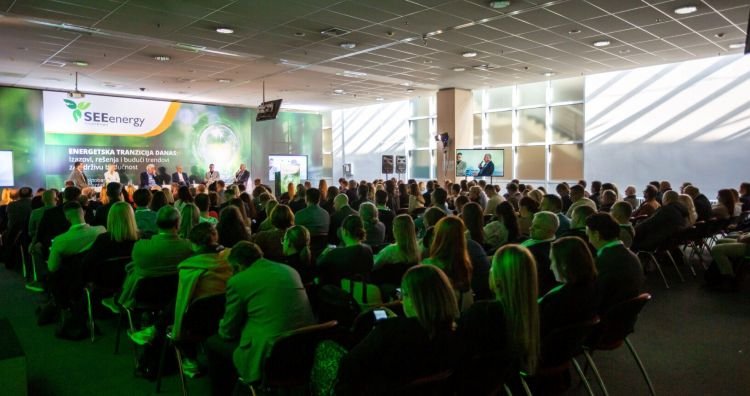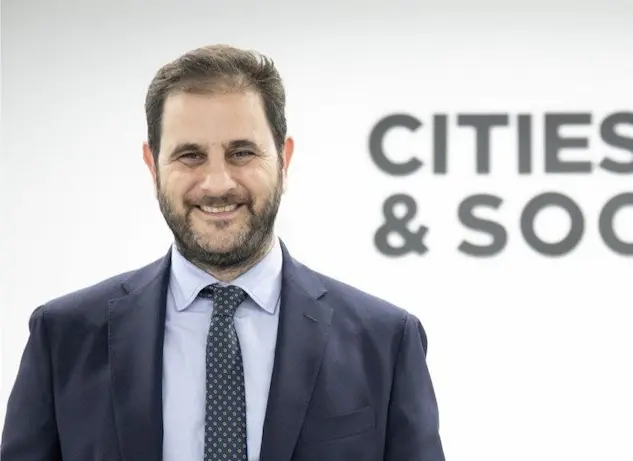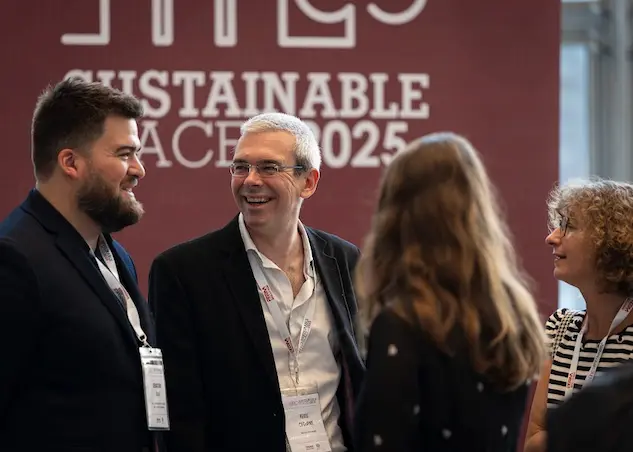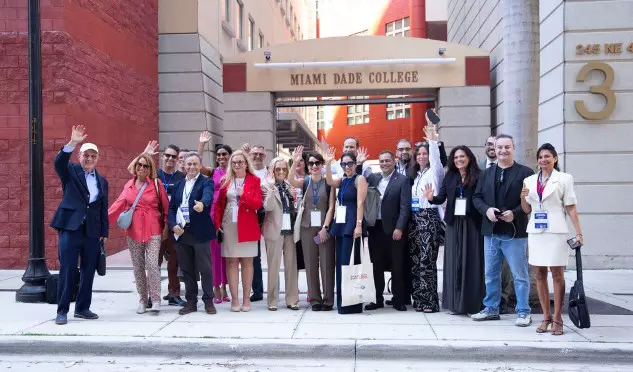The SEE ENERGY 2025 – Connect & Supply conference, taking place on 28–29 October 2025 in Novi Sad, Serbia, comes at a defining moment for the Western Balkans’ energy transition. Under the theme “Energy Transition Today: Challenges, Solutions and Future Trends for a Sustainable Tomorrow,” the event brings together regional leaders, investors, and innovators to discuss practical pathways toward a cleaner and more competitive energy future.
We speak with Jelena Bunčić, President of the National Biomass Association “SERBIO” and organizer of SEE ENERGY 2025, about how the conference bridges policy, business, and technology in advancing renewable energy across the region. In this interview, she highlights the growing role of bioenergy and biomethane, the importance of collaboration between public and private sectors, and why balanced, local solutions will shape the Western Balkans’ sustainable transition in the years ahead.
SEE ENERGY 2025 – Connect & Supply
SEE ENERGY 2025 – Connect & Supply comes at a time of significant change for the region’s energy landscape — from rising energy prices and the implementation of the EU’s CBAM to new financing mechanisms and stricter decarbonization targets. In this context, what will be the main focus of this year’s conference, and what kinds of discussions do you expect to dominate the agenda?
As in previous years, SEE ENERGY 2025 – Connect & Supply will keep its focus on renewable energy sources, but this time the perspective will be broader. Beyond wind and solar, which already dominate the market, the spotlight will also turn to biomethane, biomass, and other less represented renewables — areas where the Western Balkans hold enormous, yet still untapped potential.
Today, when the energy transition is no longer a matter of choice but of necessity, achieving the right balance of energy sources has become essential — not only for the stability of energy systems, but also for ensuring that future investments remain sustainable and resilient.
The conference aims to open up space for practical and forward-looking dialogue on all the opportunities that can help build a cleaner, more secure, and more competitive regional energy market — one that reflects both innovation and real-world needs.
This year’s SEE ENERGY conference will feature a diverse range of sessions. Could you share which topics, projects, or innovations you consider particularly important or timely in this year’s program?
Each panel discussion brings its own weight and gathers relevant experts who can offer concrete solutions and hands-on perspectives. SEE ENERGY is recognized as a professional platform that connects theory and practice, featuring speakers who are active in the field and directly involved in the development and implementation of energy projects.
We begin the program with a panel on ESCO financing, because without proper financial support, the energy transition cannot even begin. Participants will hear examples of district heating plants that have benefited from subsidies, and industrial facilities that have successfully implemented Power-to-Heat solutions, converting surplus wind and solar energy into heat for industrial use and district heating.
A particularly interesting part of the program will focus on the Swiss model of sustainable forest management and biomass supply chains, offering Serbian participants insights into how economic and energy goals can be aligned in practice.
Special attention will also be paid to the question of whether traditional biogas plants are gradually becoming outdated and if the future belongs exclusively to modern biomethane facilities — or whether both technologies will continue to coexist within the energy mix.
The second day will address highly topical issues such as the CBAM mechanism and Serbia’s upcoming domestic carbon tax, which will significantly influence the business environment and competitiveness of Serbian industry in the coming years.
The program concludes with two key panels: one on energy storage and return on investment, focusing on market realities and investment sustainability, and another on digitalization of small solar and hybrid plants, exploring how they can operate more profitably, safely, and reliably.

SEE ENERGY emphasizes practical collaboration through its B2B platform. From your perspective, how do these direct business connections translate into real progress for the regional energy market?
In my experience, it is precisely these direct connections that open the door to new partnerships and investments.
Panel discussions introduce innovations and practical solutions, while the B2B platform enables participants to connect with others who share similar interests or potential for collaboration.
This setup brings together all key actors — companies, investors, consultants, and institutions — in one place, open to dialogue, networking, and joint project development.
Bioenergy and Regional Trends
Bioenergy plays a key role in Serbia and the wider Western Balkans as part of the ongoing energy transition. How would you describe the current state of the sector today, and where do you see the greatest opportunities for growth and investment?
Bioenergy plays an important role in Serbia’s energy transition, but its potential remains largely untapped. We have an abundance of resources — from agricultural residues to forest biomass. However we still lack a developed supply chain and a stable support framework that would encourage greater investment. Nevertheless, in recent years, we’ve seen progress through district heating projects powered by biomass and the development of biogas plants.
The greatest potential for growth lies in small and medium-sized biogas plants connected to farms and the food industry, as well as in modernizing heating systems in cities and municipalities. With smart investments and strong cooperation between the public and private sectors, bioenergy can become one of the pillars of Serbia’s energy independence.
Many municipalities are looking for practical ways to decarbonize district heating and improve energy efficiency. Could you share an example of a successful project where biomass or other renewables replaced fossil fuels — and what lessons it offered for future initiatives?
A good example comes from several Serbian cities — Priboj, Kruševac, and Bogatić — where district heating systems have transitioned from fuel oil to biomass.
By using wood chips and agricultural residues, these projects have reduced CO₂ emissions and heating costs, while simultaneously strengthening the local economy, since the fuel is sourced locally.
The key lesson from these projects is that success depends not only on technology, but also on a stable biomass supply chain and strong cooperation between municipalities, heating companies, and local producers. When these elements align, switching to renewables becomes a sustainable and cost-effective model in the long run.
The development of renewable energy often depends on high-quality consultancy and project support — from technical assessments to financing and implementation. In your view, what role do consulting services play in accelerating renewable energy deployment, both in cities and in rural areas?
Consultants play a very important role, as they help turn good ideas into concrete projects.
Many municipalities know what they want to achieve, but they need support with technical documentation, permitting, and financing. When expertise, realistic planning, and a strong team come together, renewable energy projects can be implemented faster and more successfully, whether in urban or rural settings.
SERBIO’s Role and Vision
SERBIO has been promoting renewable energy for over a decade. Beyond advocacy, your team provides research, consultancy, and training. What areas currently attract the most attention from local governments and companies?
Recently, there has been growing interest in energy efficiency and heating decarbonization, especially through projects that use biomass, biogas, or waste heat. Municipalities are looking for practical ways to shift from fossil fuels to sustainable sources, while companies are increasingly investing in their own energy generation — most often solar plants, cogeneration systems, and smart energy management solutions.
International cooperation has always been important for SERBIO — from Norwegian support in its early days to participation in EU-funded projects like BioRES. How have these experiences shaped your approach to building sustainable bioenergy markets in Serbia and beyond?
Without international cooperation, there would be no real progress. Exchange of knowledge, experience, and best practices from other countries helped us develop a realistic and sustainable approach to bioenergy market development in Serbia. This kind of cooperation remains essential today — because only through joint initiatives can we accelerate the energy transition and build a stable system that benefits both local communities and the economy.
Personal Perspective
You have spent years building networks that connect experts, businesses, and institutions across the renewable energy sector. What personally drives you in this mission — and what do you find most rewarding about fostering collaboration for a more sustainable future?
By nature, I’m an optimist. I believe that change is possible when you surround yourself with people who share the same values and are ready to work together toward a common goal. I’ve been fortunate to meet many such people in this field — knowledgeable, dedicated, and genuinely motivated to make a difference. That energy and sense of cooperation are what give real meaning to everything we do.
Read and watch more interviews here


